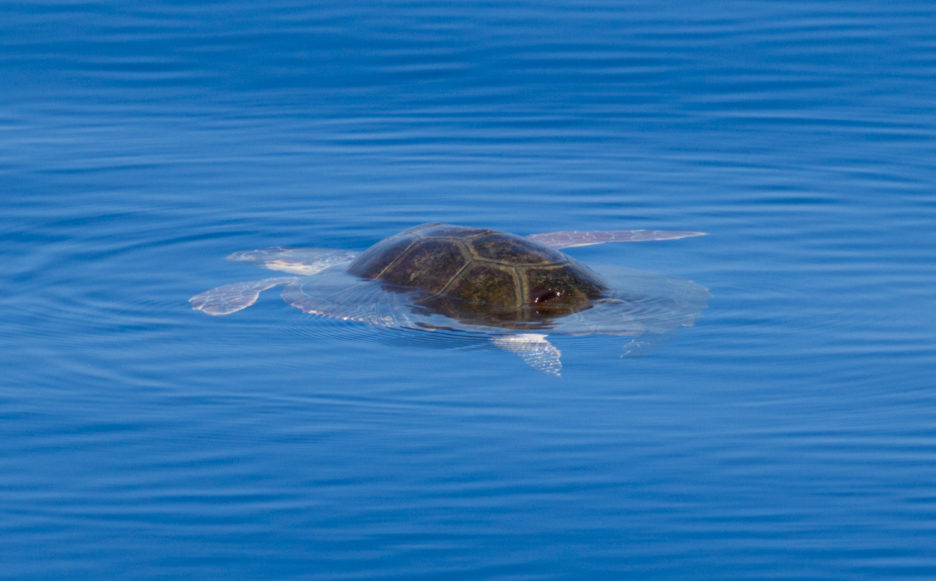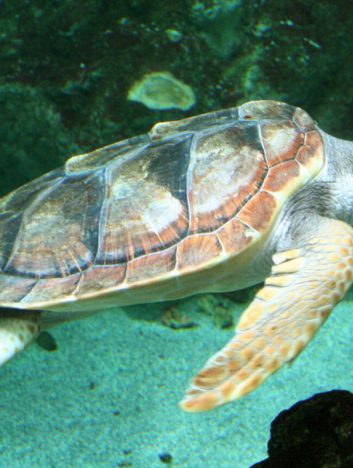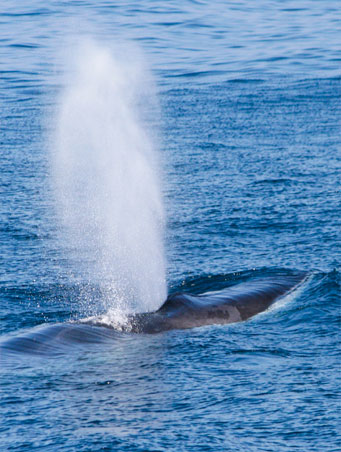The loggerhead turtle is named for its large head and is characterised by heavy strong jaws, allowing to feed on hard shelled-prey. The dorsal shield, called carapace, is slightly heart-shaped and reddish-brown in adults, while the bottom shell, called plastron is yellowish-brown bottom shell.
These massive oceanic animals can reach a length of 90 cm and weight up to 160 kg. They grow slowly and have a very long life, spending the majority of their time in the ocean and coming ashore only to nest.


Loggerhead turtles are primarily carnivorous. In the Medietrranean Sea, they mainly feed on squid and on the Fried Egg Jellyfish (Cotylorhiza tuberculata). However, jelly plankton, neuston, fish, crustaceans and other cephalopods are also consumed. Thanks to their powerful jaws, they are able to literally crush the hard shells of their prey.
Loggerhead sea turtles are known for their migratory behaviour. Their life history involves a series of stages of development from hatchling to adult.
Hatchlings and juveniles spend the first 7 to 15 years of their lives in the open ocean, then they migrate to nearshore coastal areas where they will forage and continue to grow for several more years. Finally, adult loggerhead turtles migrate hundreds to thousands of kilometres from their foraging grounds to the beaches where they hatched to nest.
Loggerhead sea turtles have very long lives and can live up to 80 years. Adult females reach maturity at 35 years and are solitary night-time nesters. Every two to three years, they mate in coastal waters and then return to nest on the very same beach where they were hatched, called the natal beach.
Each nest contains about 100 eggs. The sex of hatchlings is determined by the temperature of the sand, where cooler temperatures produce males and warmer temperatures produce females. Finally, few hatchlings survive to adulthood, with estimates ranging from one in 1,000 to one in 10,000.




The common bottlenose dolphin is most likely the best known of all cetaceans, figured in legends and being known since the ancient Greeks ...

The short-beaked common dolphin is a medium-sized dolphin, easily distinguishable by a very unique hourglass-like pattern on the side of ...

The striped dolphin is the most abundant dolphin species in the Mediterranean Sea. It is a small, active and energetic dolphin, usually s ...

Risso’s dolphins are large members of the Delphinidae family, presenting a distinctive coloration that can vary throughout their ...

The fin whale is the second longest animal in the world, after the blue whale, reaching a length of 23 m and weighting up to 50 tons. The ...

The sperm whale is easily recognisable by its massive heads which contains the spermaceti: the world’s most powerful natural sonar or ech ...